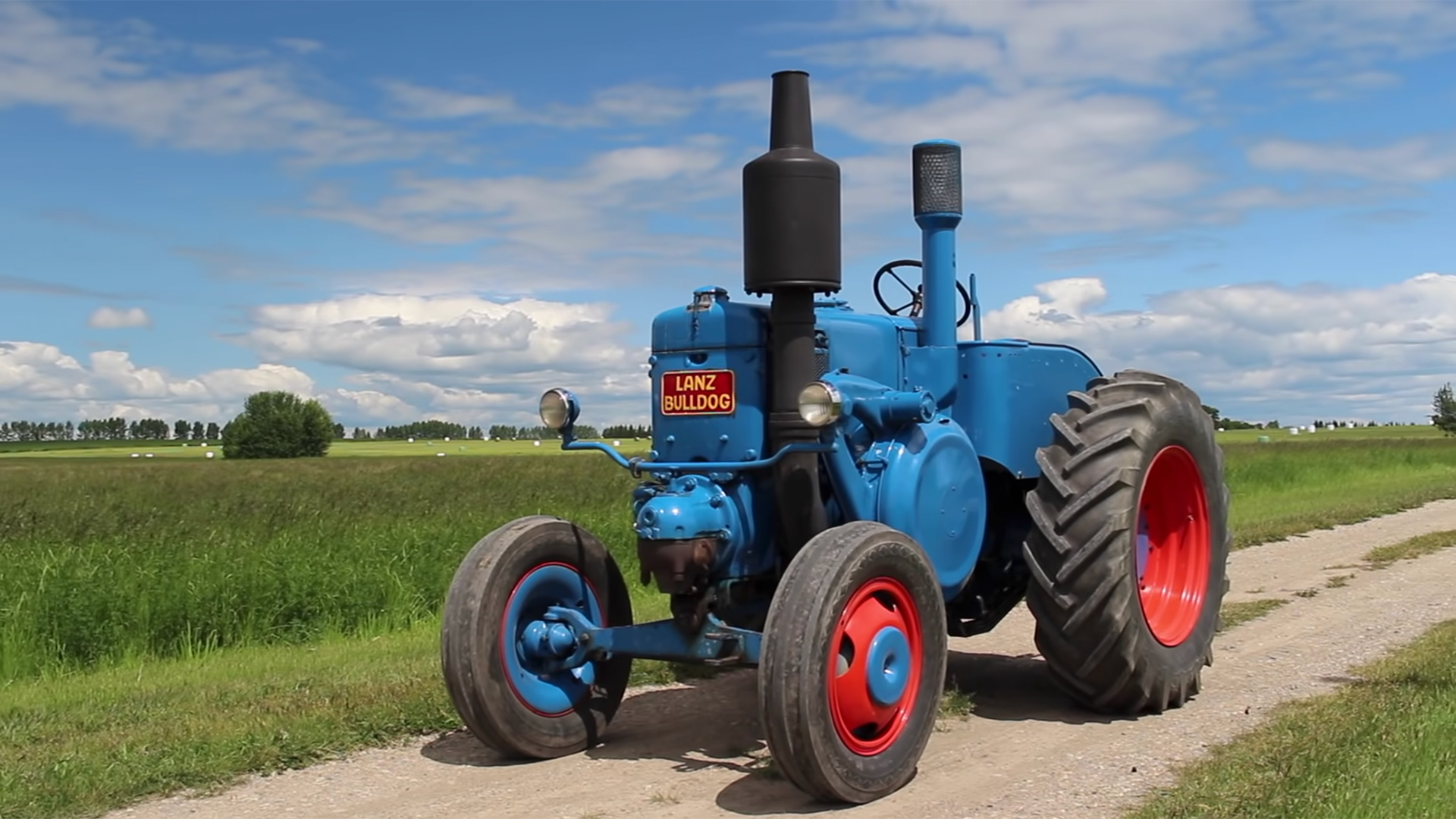

Antique farm equipment should have its own place in the history book of weird wheels. Some tractors from the middle of the last century could be started with paper and a shotgun shell, while others like the family of Lanz Bulldog models were equally strange. They featured only a single cylinder in various displacements, and they were all relatively huge—the largest was a 10.9-liter unit. They had two-stroke hot-bulb engines that could run in either direction on virtually any fuel, making them the perfect budget option for rural workers. Luckily, quite a few of them are still around and in operation today.
They were actually extremely common in Europe; in fact, “Bulldog” is a common slang term for any old, generic tractor in places like Germany. At least, that’s what I read on the internet. In any case, folks loved them for their simplicity and low running costs. They were also more reliable than contemporary diesel engines of the period, pre-dating World War II during the first part of their production run.

Now, that “in either direction” bit is the real party trick. It’s made possible by the hot-bulb design, which was more or less a predecessor to the compression-ignition diesel engine. Rather than having a spark plug at top dead center (TDC), there’s a literal hot bulb in a separate chamber that combusts the fuel when the piston delivers compressed air during its first stroke. The real power comes after more oxygen is introduced during the piston’s downward motion, which uncovers an exhaust port first and then an inlet port almost immediately afterward.
A process called “scavenging” then takes place, which you’ve probably heard of if you’re familiar with two-stroke engines. Anyhow, some of the fresh intake air is lost out of the still-open exhaust port while the piston completes its descent. While returning to near-TDC, the piston sends fresh charge air into the crankcase. The piston is then sent into a cycle given the power stroke’s force of combustion.

Since it has no valves, the Lanz Bulldog’s engine can run both clockwise and counter-clockwise. There’s even a gauge to show you which direction it’s turning and, in some cases, that’s the only gauge—period. Rumor has it that many Bulldog tractors didn’t even have a reverse gear, so operators would simply reverse the engine by lowering the revs and kicking it the other way. It’s all pretty wacky, and you can see that as well as the unusual starting process in the clip above.
At the 20-second mark, the operator cranks the engine counter-clockwise, “bouncing” the piston off the compression phase and causing it to run the other way. Since the hot-bulb unit is capable of running so slowly, it can allow fuel in and combust it without completing a full rotation. Thus, it goes back and forth, “running” at zero rpm.
For reference, the Bulldog featured in this video has a 10.3-liter engine making roughly 45 horsepower.

Hot-bulb engines can be cantankerous as the bulb itself needs to be kept warm enough for combustion. Under load with the throttle applied, this isn’t a problem as the constant combustion maintains the necessary temperature, which varies depending on the fuel you’re using. Many hot-bulb-powered tractors had auxiliary heaters that would keep everything at operating temps, and total-loss lubrication was the norm, though later Lanz tractors utilized a scavenge pump that drew excess oil from the crankcase and returned it to a separate reservoir.
We’ve long since engineered our way past this horizontal-moving oddity of a power plant, but it’s nevertheless cool to look back on. There might not be one on every corner in the States like there once was in Europe, but you could probably get your hands on one if you tried hard enough.
Got a tip about odd and unusual farm equipment? Email the author: caleb@thedrive.com